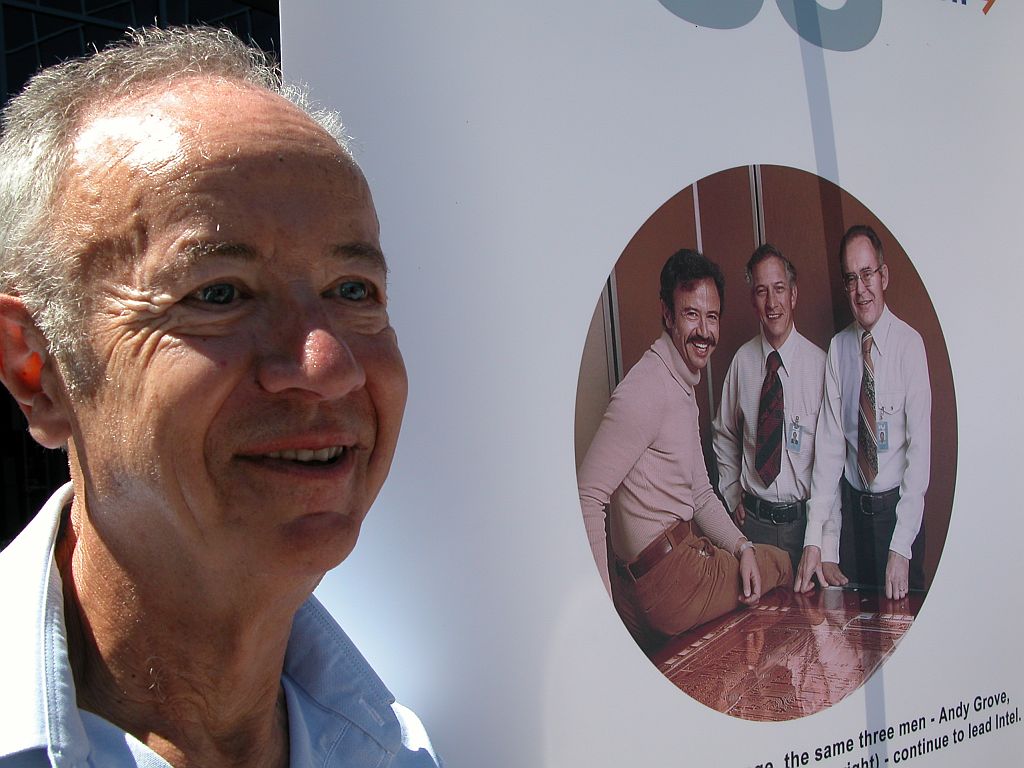Measure What Matters
- Objective
- Key Results
- The Father of OKRs
- OKRs Superpowers
- Continuous Performance Management: OKRs and CFRs
- Culture
- Reference
“A management methodology that helps to ensure that the company focuses efforts on the same important issues throughout the organization”
- Ideas are easy. Execution is everything
- OKRS. Short for Objectives and Key Results
Objective
WHAT. Significant, concrete, action oriented, and (ideally) inspirational
Key Results
HOW. Specific and time-bound, aggressive yet realistic. Measure and verifiable.
The Father of OKRs

Intel Free Press [CC BY-SA 2.0 (https://creativecommons.org/licenses/by-sa/2.0)]
Former Intel CEO Andy Grove in 2003 with a 1978 photo of him with Intel co-founders Robert Noyce and Gordon Moore.
- Each objective should be tied to five or fewer key results
- Set goals from the bottom up
- No dictating
- Stay flexible
- Dare to fail
- Be patient; be resolute
OKRs Superpowers

Focus and Commit to Priorities
- Successful organizations focus on the handful of initiatives that can make a real difference, deferring less urgent ones
- “must be able to measure… performance and results against the goal.” Peter Drucker
- If you’re certain you’re going to nail it, you’re probably not pushing hard enough
- The best OKR cadence is the one that fits the context and culture of your business
- Completion of all key results must result in attainment of the objective. If not, it’s not an OKR
- The one thing an OKR system should provide par excellence is focus. This can only happen if we keep the number of objectives small
Align and Connect for Teamwork
- Public goals are more likely to be attained than goals held in private
- Meritocracy flourishes in sunlight
- Companies with highly aligned employees are more than twice as likely to be top performers
- People who choose their destination will own a deeper awareness of what it takes to get there
- MyFitnessPal and Under Armor: “North star alignment”: “When our customers succeed at reaching their health and fitness goals, we succeed as a company”.
Track for Accountability
- OKRs are living, breathing organisms
- The single greatest motivator is ‘making progress in one’s work.’ The days that people make progress are the days they feel most motivated and engaged
- The point of a real-time dashboard is to quantify progress against a target and flag what needs attention
- Where OKRs scores pinpoint what went right or wrong in the work, and how the team might improve, self-assessments drive a superior goal-setting process for the next quarter
- There are no judgments, only learning
- The Gates Foundation: making goals concrete
Stretch for Amazing
- “The biggest risk of all is not taking one” – Mellody Hobson
- BHAG: “Big Hairy Audacious Goals” – Jim Collins
- Google divides its OKRs into two categories, committed goals and aspirational (or “stretch”) goals
- There is no one magic number for the “right” stretch. If you seek to achieve greatness, stretching for amazing is a great place to start
- Google: “The Gospel of 10x”. Gmail: 1 GB of storage when web-based email systems offered 2 to 4 MB
Continuous Performance Management: OKRs and CFRs
CFRs. Conversations, Feedback, Recognition
Conversations
An authentic, richly textured exchange between manager and contributor, aimed at driving performance
Feedback
Bidirectional or networked communication among peers to evaluate progress and guide future improvement
Recognition
Expressions of appreciation to deserving individuals for contributions of all sizes
Culture
- Structure and clarity: are goals, roles, and execution plans on our team clear?
- Psychological safety: can we take risks on this team without feeling insecure or embarrassed?
- Meaning of work: are we working on something that is personally important for each of us?
- Dependability: can we count on each other to do high-quality work on time?
- Impact of work: do we fundamentally believe that the work we’re doing matters?
Reference
Doerr, John. Measure what matters: How Google, Bono, and the Gates Foundation rock the world with OKRs. Penguin, 2018.